
This post may contain affiliate links. We may receive a small commission, at no cost to you, if you make a purchase. Read Disclosure.
If you’re looking for unique experiences in Northern Thailand, then you’ll want to head deep into Dan Lao mountain range outside of Chiang Rai. Here you will find some of the most authentic Akha villages in Southeast Asia, nestled in the foothills of the Doi Mae Salong Mountain.
The Akha people originally came to Thailand from Tibet, and migrated to Thailand in the early 20th Century. It’s estimated that 80,000 Akha hill tribe people live across the Golden Triangle, and in Thailand, in the Chiang Rai and Chiang Mai provinces.

There are hundreds of Akha villages across Thailand, Laos and Myanmar, many of which are open to tourism so that travellers can connect with the local culture and learn about their way of life.
I visited Baan Huay Kee Lek, a Akha village perched on the top of a mountain in the Chiang Rai province of Thailand. I knew as soon as we drove up the dusty and windy dirt track to the village we were in for a treat.
Here is what I discovered…
Disclaimer: My visit to the Huay Kee Lek Akha village was part of a tour with Tourism Thailand, but all thoughts, ideas and opinions in this guide are my own.
About Baan Huay Kee Lek

Isolated, authentic and free from groups of tourists (except for our small tour group of writers), Baan Huay Kee Lek is an Akha Hill Tribe village off the beaten path.
Baan Huay Kee Lek is located in the Chiang Rai province, in the Wawi sub-district, approximately 25 km’s from the district center of Mae Souay.

Visiting hill tribe people in Thailand is a popular experience for travellers and many of the hill tribe villages are said to be losing their identity to the tourism industry.
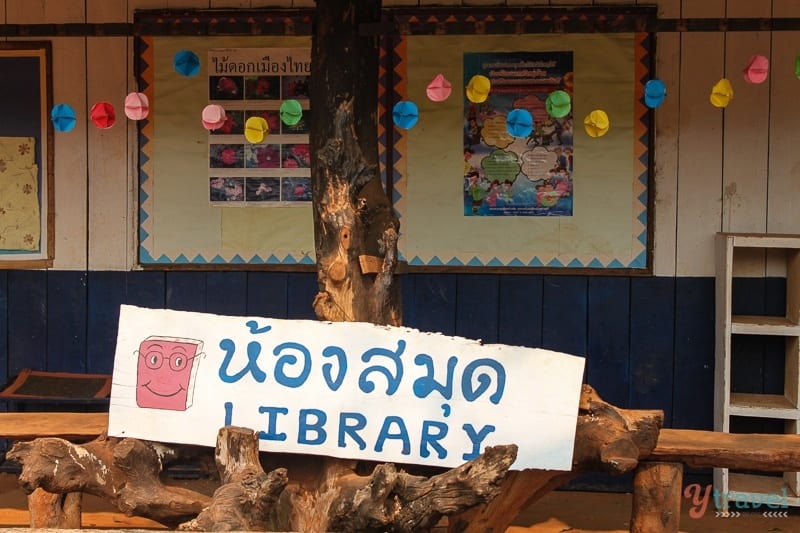 A visit to the village school on the ridge
A visit to the village school on the ridge
We were the first tourists to visit Huay Kee Lek. The villagers had only decided to welcome in the gawkers in 2010, and in an effort to not lose themselves to them, the Akha community created a counsel to manage it as a community based tourism project.
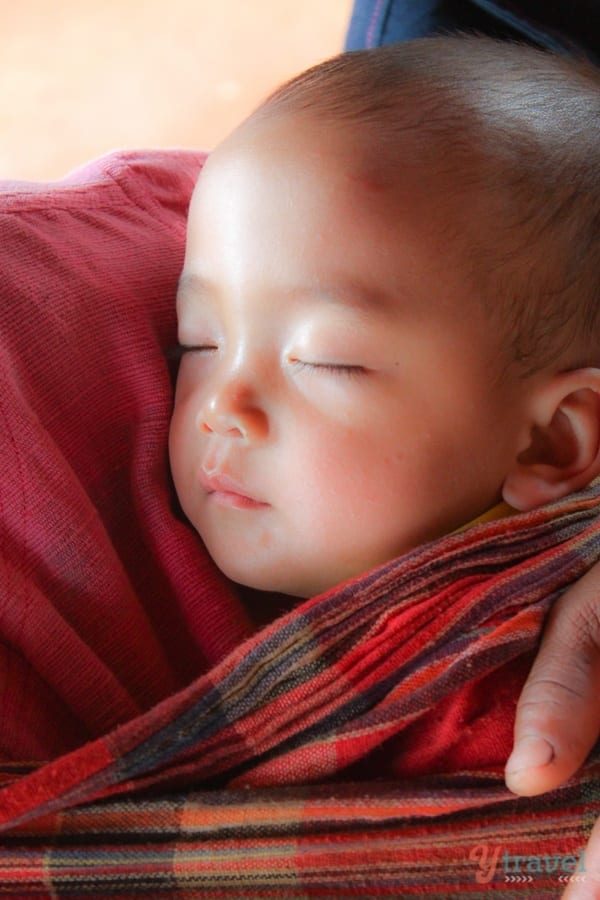 Angelic
Angelic 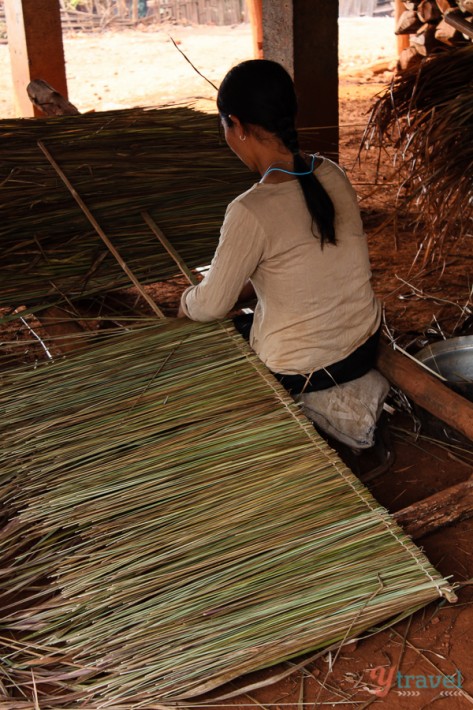
This tourism initiative aims to show the visitor the local traditions, values and lifestyle whilst conserving the value of the individual culture and environment. Visitors can stay overnight in a homestay or join the rural people in their daily lives in an effort to increase understanding and respect for each other.
This form of responsible travel allows the villagers to maintain their traditional skills, control the tourism income, pursue their normal life and preserve their cultural and natural heritage.
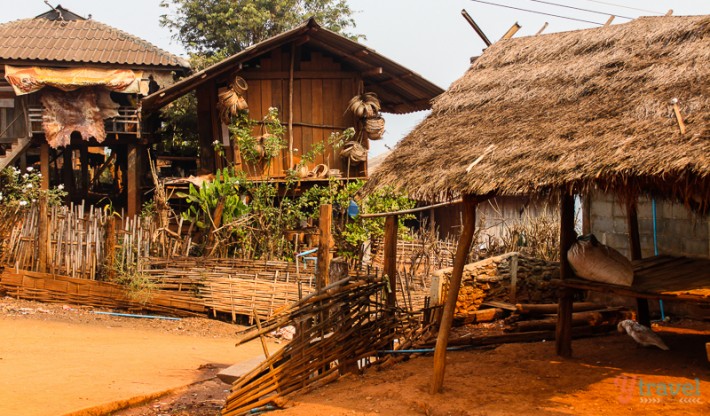
Life in Huay Kee Lek Village
Despite the authenticity of village life in Huay Kee Lek, many Akha villagers ride motorbikes into Chiang Rai during the day to work in factories, government positions and private businesses.
They wear suits, or “normal” clothes at work, and the traditional garments you see are reserved for special occasions, special visitors, or for those who continue living in the traditional manner.

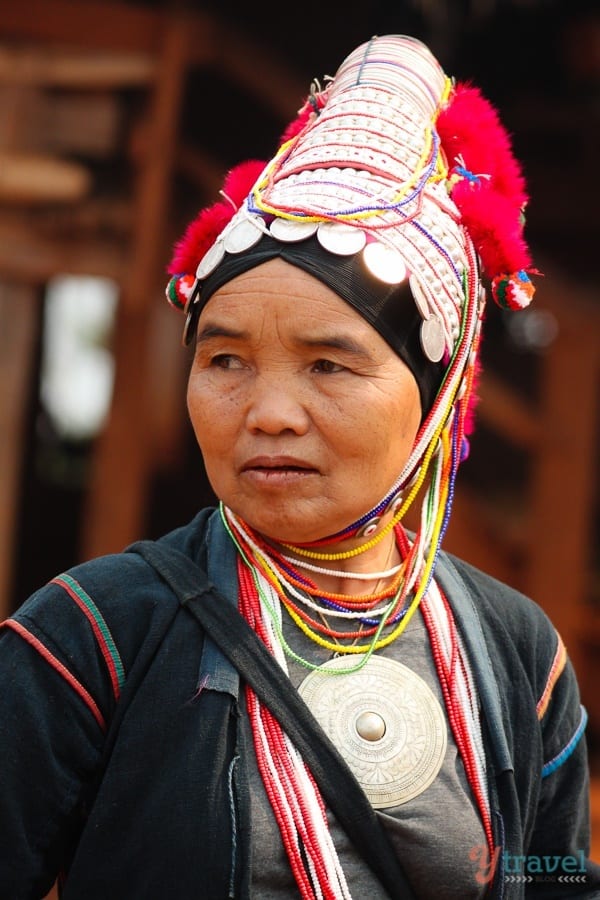
Everyday life still continues in much the same way as it has for years, except modern life is creeping in slowly. And this is fine, evolution happens everywhere.

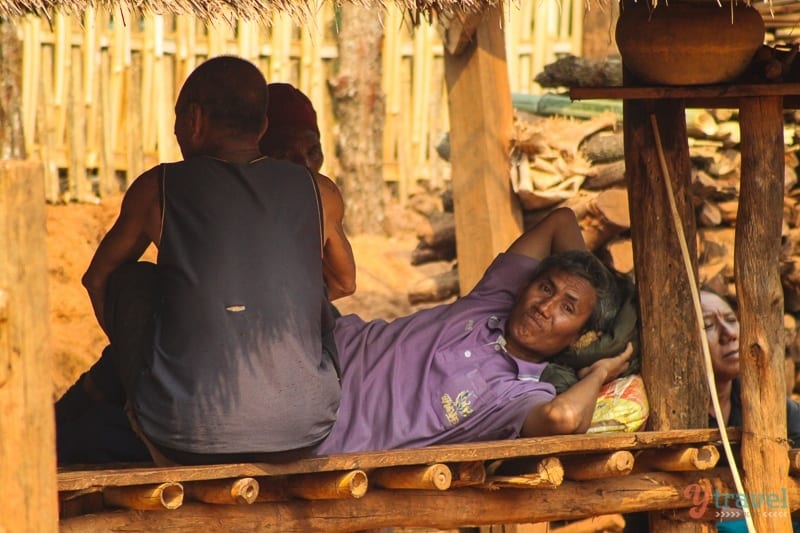 Just another lazy lizard day
Just another lazy lizard day
We saw the mix of old and new – with women weaving grass and drying beans in the sun, and taxi drivers lazing about on bamboo platforms and young soldiers standing around in groups laughing and chatting.
Women still make Akha handicrafts such as bracelets and baskets, which can be bought from them as a souvenir.
Pigs, chickens, and roosters ran round our feet and children played in the dirt in their backyards or under their bamboo houses built on wooden stilts.

The Akha people have no traditional written language, and many of the older generation are illiterate, but even though they couldn’t speak English or communicate well, we still felt welcome.
They seemed to enjoy showing tour groups their way of life, and invited us into their Akha mud house or to watch them work.
A smile goes a long way when you cannot speak the language.
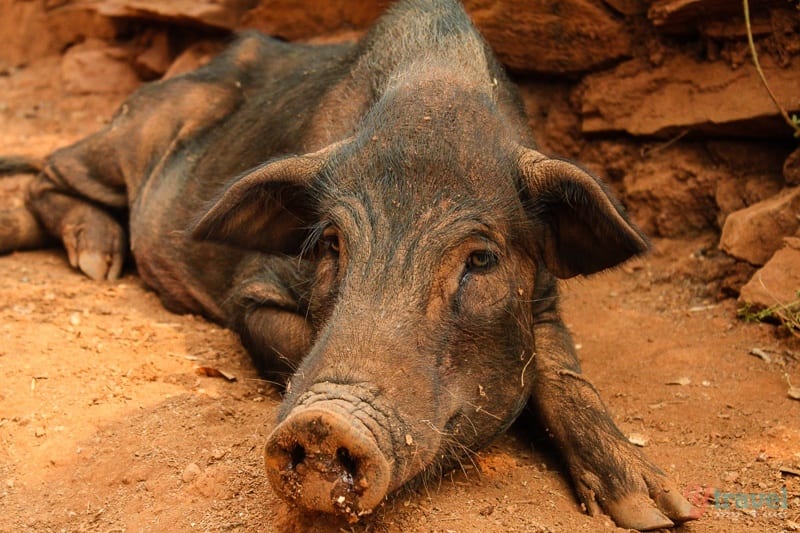 Whiling away the hours
Whiling away the hours 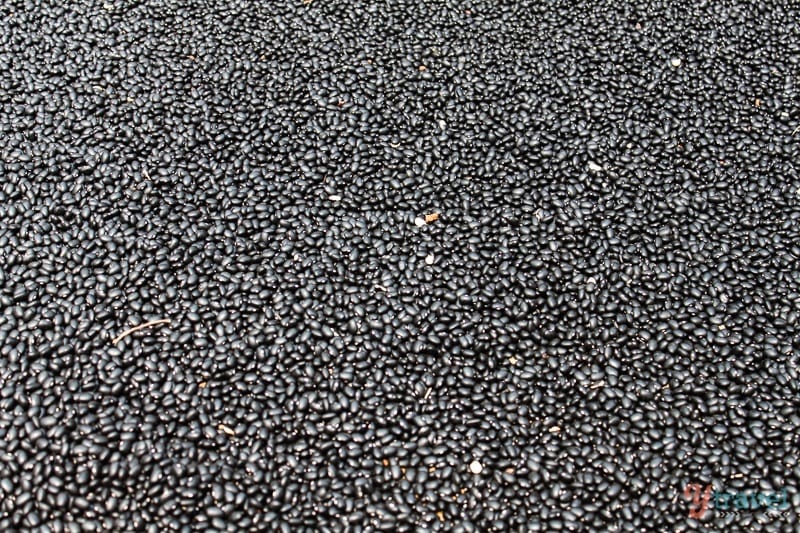 Drying beans
Drying beans
Our guide, in his broken English, and with help from our Go Green Thailand guide, told us about village life.
He took us to see the sacred village Akha Swing, used for special celebrations.
The Akha Swing Festival takes place late August every year, at the peak of the rainy season. It sees the colourful Akha people celebrate a four day festival in their villages.
 Grandmotherly
Grandmotherly  Beautiful elder. Love the stories her face shares
Beautiful elder. Love the stories her face shares
It marks the end of the planting of the village rice and is in celebration of all their hard work and the lushness of the earth around them. It’s a joyful time as they show respect and gratitude to their ancestors who bless them with abundance.
It’s also marks the rite of passage for Akha girls passing into womanhood, who dress in the colourful traditional dress of the Akha people and let their hair down swinging wildly through the air on the rickety swing.
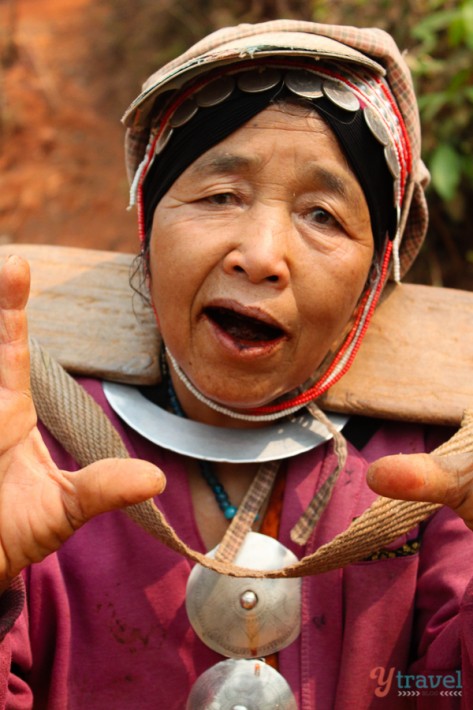
Taking a Walk
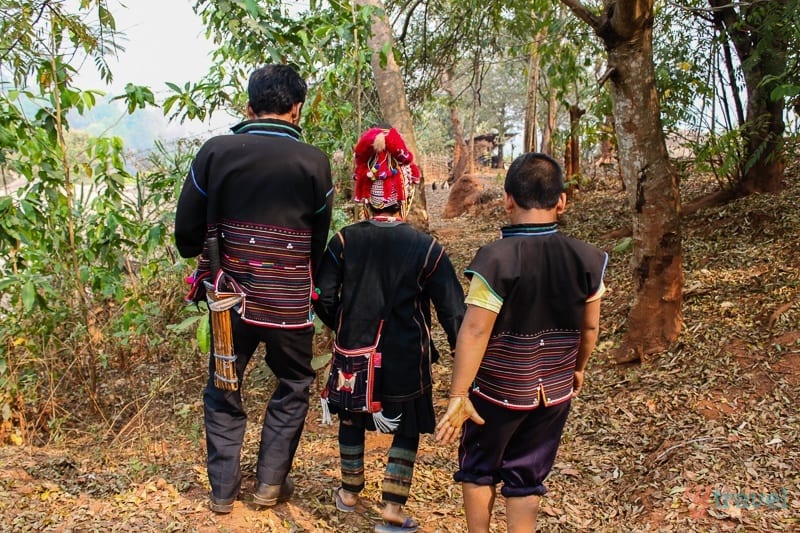 Counsel leader, his wife and son
Counsel leader, his wife and son
The counsel leader and his wife, the village herbal doctor, took us for a short walk in the surrounding forest to get a deeper insight into the self-sufficient village life.
 Walking through the spirit gate
Walking through the spirit gate
We walked under what looked to be a haphazardly constructed gated entrance to the village, with simplistic grass woven circular designs.
We discovered that it was a Spirit Gate designed to keep bad spirits at bay.
During the Swing festival, this gate would be decorated with wood carving and amulets.

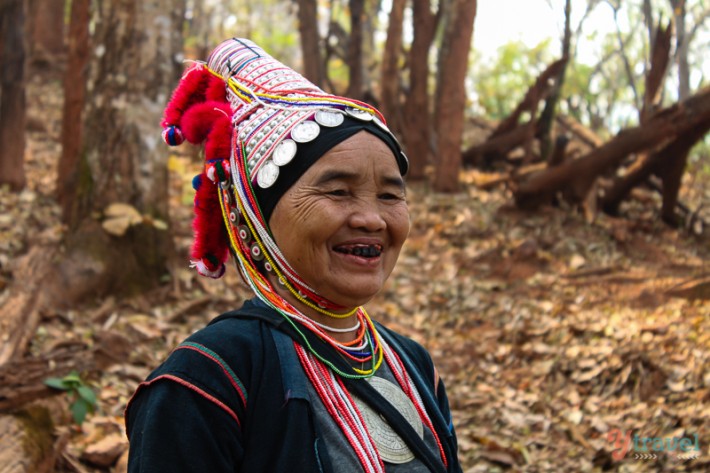
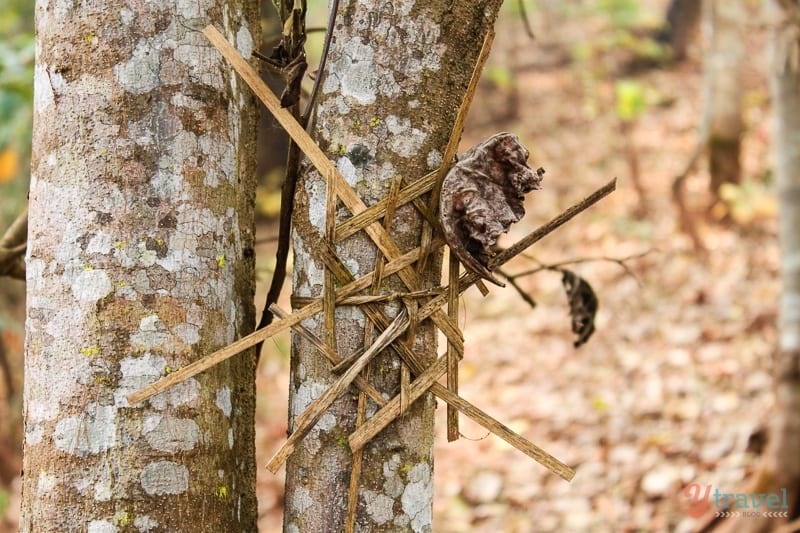 Spirit Eye- A sign of spiritual significance
Spirit Eye- A sign of spiritual significance
As we walked, we learned about all the unique traditions and ways in which the community work. For example, we learned that attaching a ‘spirit eye’ (see above pic) to trees indicates that they must not be cut.
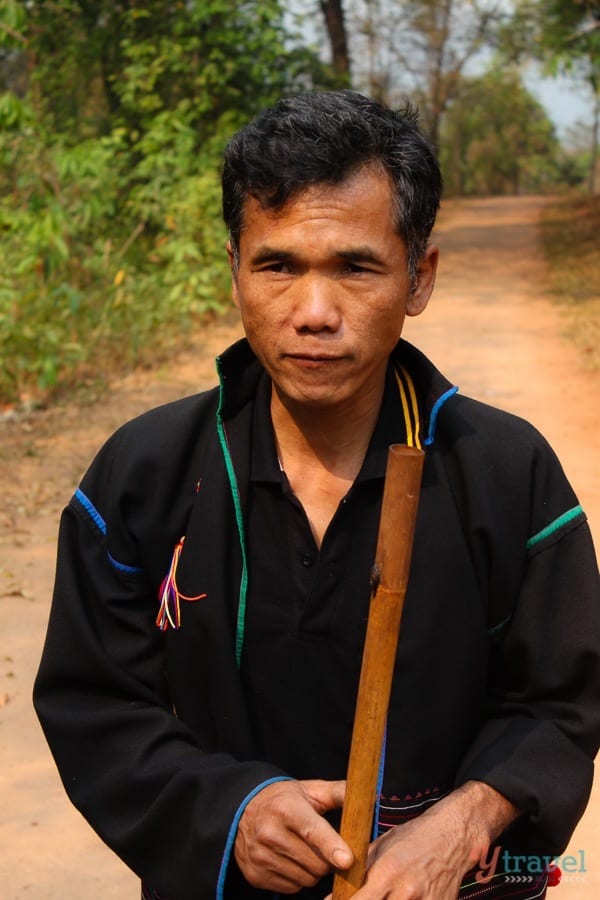 The community based tourism counsel leader
The community based tourism counsel leader  Our forest walk
Our forest walk
A Healing Opportunity
On our walk tragedy struck when one of our group fell down the mountain and scraped his arm. Our medicine doctor disappeared into the forest and returned soon with a variety of leaf specimens and a larger leaf to act as a petrie dish.
She began rolling and grinding until it formed a paste. Then she gently applied it to his abrasion. It stayed on until we left.
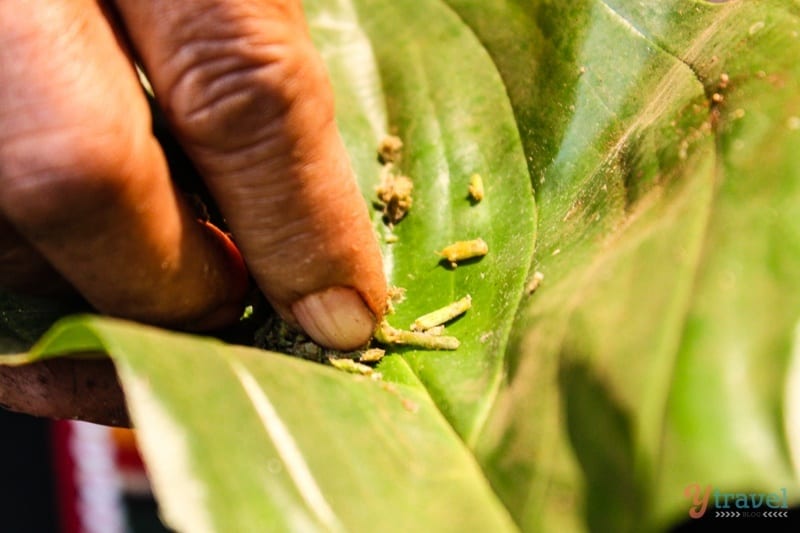 Mixing the medicine
Mixing the medicine  Applying
Applying
It didn’t heal it magically then and there, but it helped relieve his pain and no infection visited for the remainder of our trip – the power of the natural world.
He was very happy with the remedy. I was very happy watching the herbal doctor at work.
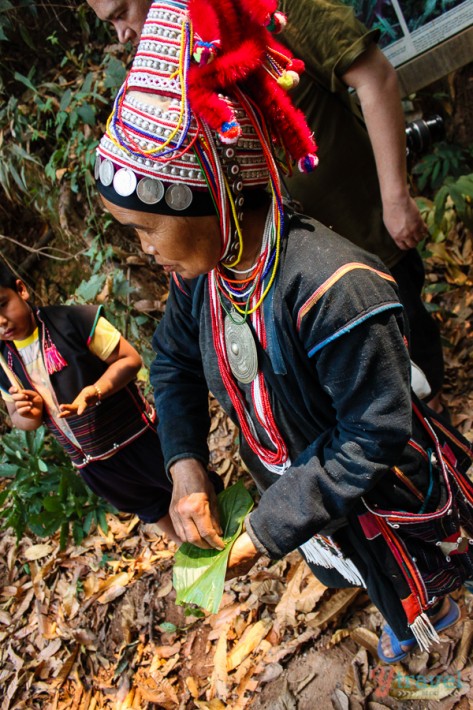
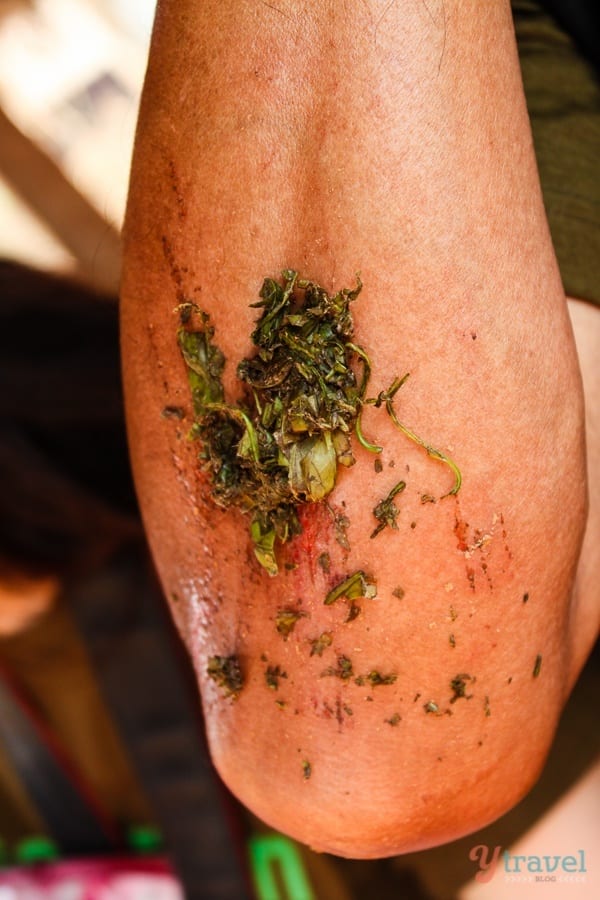 The poultice at work
The poultice at work
Sharing a Meal Together
We were invited to share a meal with the villagers. The food is different from the usual Thai dishes like Pad Thai, but it was delicious and made with fresh ingredients.
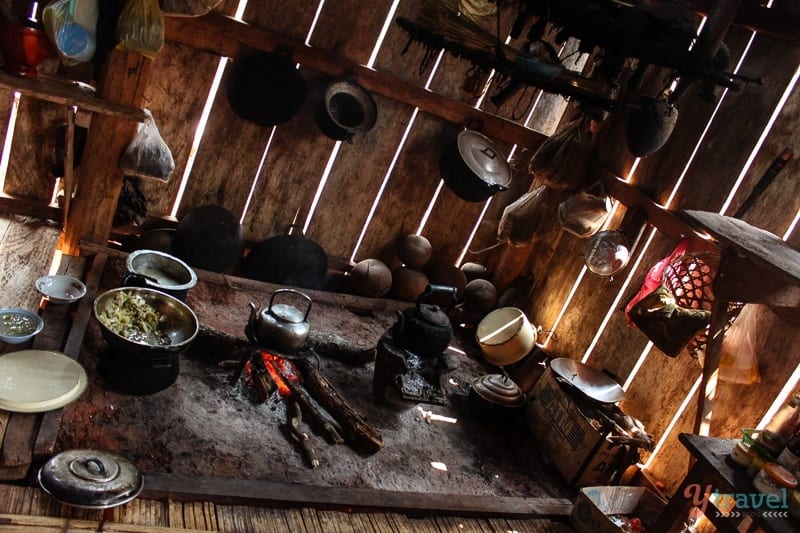 The kitchen
The kitchen 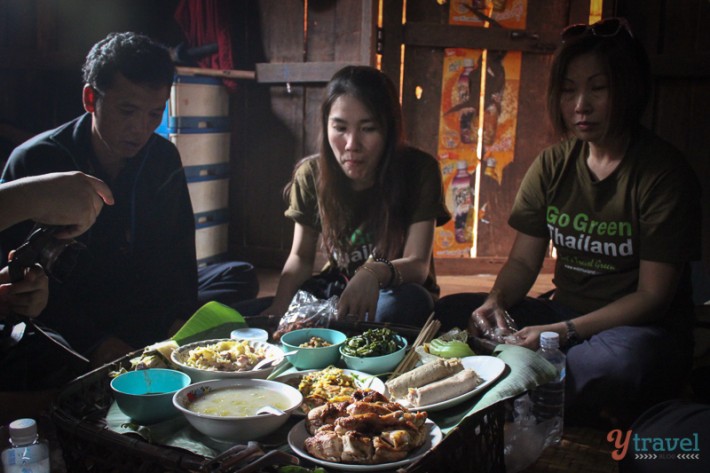 Enjoying a meal together
Enjoying a meal together
We were invited into the home of a sweet married couple. They prepared a simple meal with food grown in the gardens and village animals, which we ate together on the floor of their living room.
Their wooden home was bare, but filled with warmth and happiness.
They could not speak English, but their smiles and kind deeds said so much.
(I was also really happy to see their 4 year old son throw a tantrum–it happens everywhere, we are not alone!!)
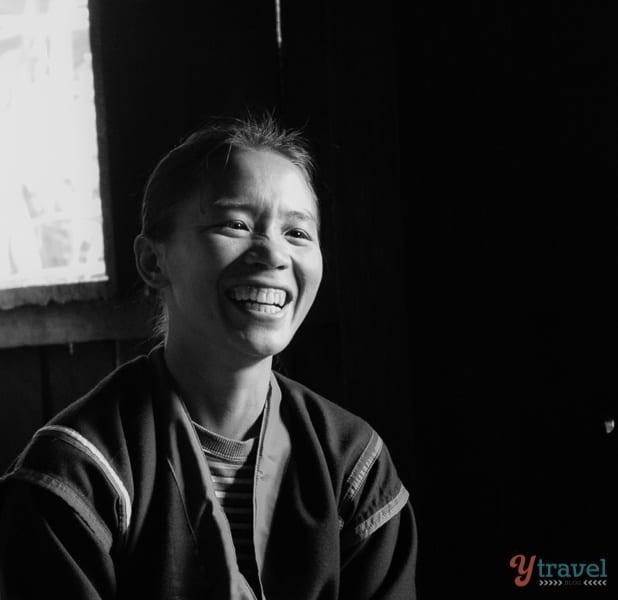 Our sweet host
Our sweet host
While there are no tours like ours that go to Huay Kee Lek Village anymore, visiting a hill tribe village is definitely worth doing as you learn so much about the way of life (akha zang). You can see this 1-day trek that goes to Akha and Lahu.
Some villages that are open to tourists are the Lahu Village, Lisu Village, or Long Neck Village (also known as Karen Village).
You can book tours at any tour company in Chiang Rai or head to Get Your Guide to find a combined tour.
Have you experienced a hill tribe village in Thailand before? Let us know about your experience in the comments.
nnx4 Powerful Ways to Travel More & Create Better MemoriesWant to know how we’ve made a lifetime of travel for 25 years? This is what gives us incredible memories to share around the campfire. Join our community for insider tips and updates!n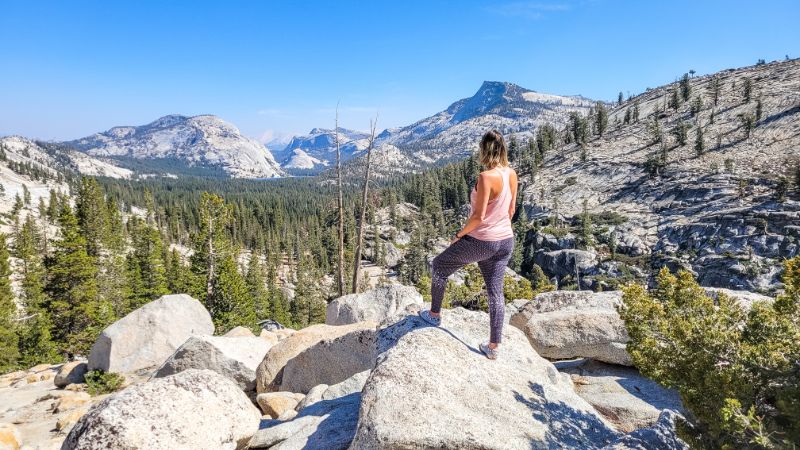 nnn
nnn
